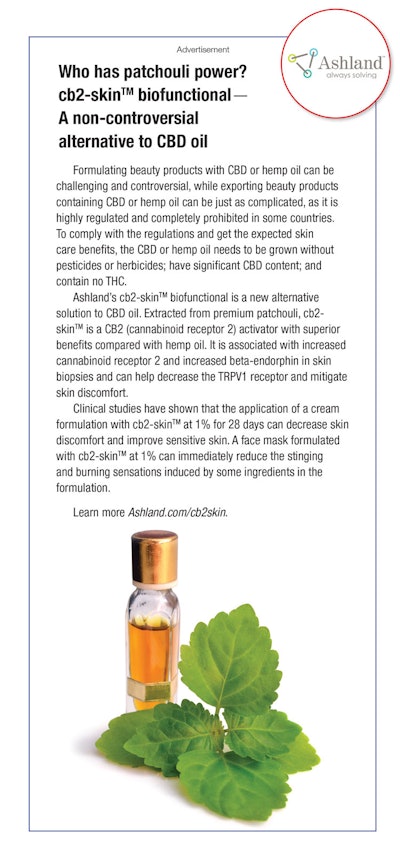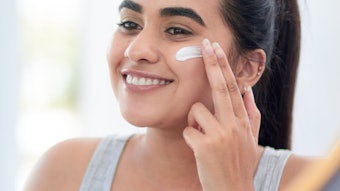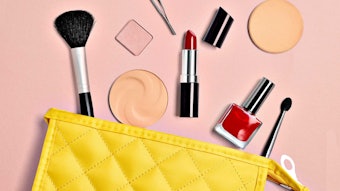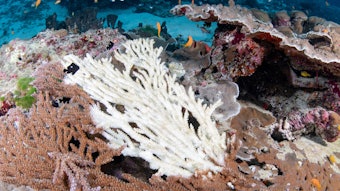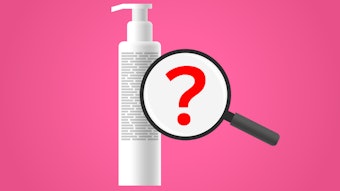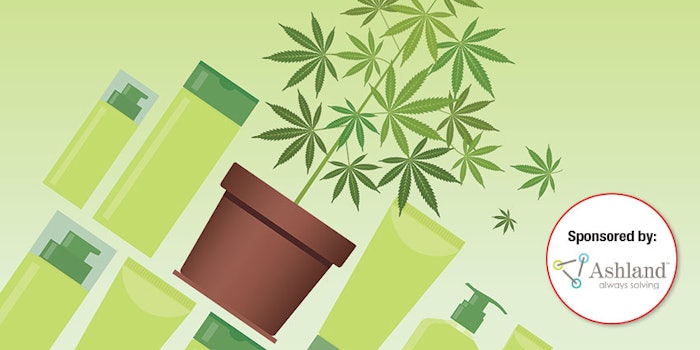
According to federal law, a Cannabis L. sativa plant that contains less than 0.3% THC is considered hemp. Presently, there are a variety of cosmetic products on the market that prominently feature the inclusion of hemp-based CBD. These products come in a variety of forms, from lip balms to bath bombs and body oils.
However, the regulatory landscape for cosmetics containing CBD in the U.S. is complex and evolving. The Agriculture Improvement Act of 2018, also known as the “Farm Bill,” removed hemp from the Controlled Substances Act. This means hemp is no longer considered an illegal substance under U.S. federal law. This does not mean, however, that hemp products will no longer be regulated. (See CBD Alternative sidebar, sponsored by Ashland.)
In the wake of the Farm Bill, the U.S. Food and Drug Administration (FDA) released a series of statements clarifying its position on CBD in FDA-regulated products. The FDA has also issued a steady stream of warning letters to companies marketing CBD products, including topicals and creams, that cross the line into unfounded drug claims.
For example, in March 2019, the FDA issued a warning letter related to the sale of a CBD salve that purported to “treat chronic inflammation and other conditions.” The FDA also issued a warning letter to a company selling a CBD “muscle gel” advertised for reducing inflammation and relieving arthritis pain. CBD-containing cosmetics also have been cited for more egregious claims—such as treating cancer tumors and heart disease.
The FDA currently prohibits the introduction of food or dietary supplements containing added CBD, regardless of whether the CBD is hemp-derived. This is because under the Federal Food, Drug, and Cosmetic Act (FDCA), a manufacturer may not introduce into commerce a food or dietary supplement containing an active ingredient that is in an FDA-approved drug, or for which substantial clinical investigations have been conducted and been made public. CBD is the active ingredient in the FDA-approved drug Epidiolex, and has been the subject of substantial clinical investigations that have been made public. Therefore, CBD is not permitted in food or supplements.
However, there is not a similar provision in the FDCA that prohibits the inclusion of CBD, or other drug active ingredients, in cosmetic products. In other words, there is no outright prohibition against CBD-containing cosmetics.
The ‘Why’ of CBD Cosmetic Compliance
Before getting into what cosmetic manufacturers should do in order to remain compliant, it is important to understand why. The FDA regulates cosmetics under the FDCA, the Fair Packaging and Labeling Act, and Title 21 of the Code of Federal Regulations (CFR). Under the FDCA, cosmetics are defined as “articles intended to be rubbed, poured, sprinkled or sprayed on, introduced into, or otherwise applied to the human body...for cleansing, beautifying, promoting attractiveness or altering the appearance.”
Unlike drugs, cosmetic products and ingredients do not require FDA approval before they can be marketed; the exceptions are color additives, and sunscreens and antiperspirants—which the FDA considers as “drugs” under the FDCA. Cosmetic manufacturers are also not required to register their establishments—although the FDA does have a voluntary registration program; nor list their products with the FDA.
The FDA classifies products as cosmetics or drugs according to their intended use. The intended use is determined primarily by the claims a manufacturer makes in its promotional materials, including on websites and in TV ads. For example, a topical cream intended for “moisturizing” would be considered a cosmetic; a topical cream intended for “reducing inflammation” or “pain relief” would be considered a drug. And certainly more aggressive claims—such as “helping to cure or prevent diseases” including cancer or rheumatoid arthritis—would not be considered appropriate claims for cosmetics.
Regulations for CBD cosmetics in the U.S. are complex and evolving. The 'Farm Bill' legalized hemp but this does not mean hemp-containing products will not be regulated.
Products also can be both cosmetics and drugs as the categories are not mutually exclusive. For example, an eye cream that purports to “reduce inflammation” and also “provides key nutrients for moisturizing” is making both drug and cosmetic claims, respectively.
A product’s claims can also be implied. For example, the FDA may consider a claim that a product “improves joint mobility and reduces joint inflammation and pain” to be an implied claim for treating rheumatoid arthritis. In the same way, a claim that a product “prevents bone fragility in older women” may imply that it prevents osteoporosis.
The FDA has stated that a product’s intended use also can be established based on consumer perception; i.e., established through the product’s reputation, or by ingredients that have a well-known, to the public and industry, therapeutic use. Asserting a non-claims based theory of intended use, however, would likely not withstand judicial scrutiny. Nevertheless, companies should understand the consumer takeaways and perceptions so that adequate context can be provided in a product’s promotional materials.
Although cosmetic manufacturers are not required to register with the FDA or submit their products for pre-market approval, they do have a legal responsibility to ensure the safety and labeling of their products. The FDCA prohibits the introduction of cosmetics that are “adulterated” or “misbranded,” and a cosmetic is considered adulterated if it contains a substance that may make the product harmful to consumers under customary conditions of use.
Examples include if a product contains a filthy, putrid or decomposed substance; if it is manufactured or held under insanitary conditions where it may have become contaminated with filth; or may have become harmful to consumers. Events that may render a cosmetic adulterated often relate to the product’s manufacturing or the failure of ingredients to meet specifications—for example, a preservative that does not prevent bacterial contamination. A cosmetic would be deemed misbranded if its labeling is false or misleading; if it does not bear the required labeling information; or if the container is made or filled in a deceptive manner.
The ‘How’ of CBD Cosmetic Compliance
How can companies ensure their CBD cosmetics comply? First, cosmetic products containing CBD may currently be marketed in the U.S., so long as the products meet the adulteration and misbranding provisions of the FDCA, including all labeling requirements under 21 CFR Parts 700 and 701. These adulteration and misbranding provisions ensure that products on the market are safe for consumers to use; and of course, safety goes to the heart of the FDA’s mission to protect the public health.
Cosmetics are not subject to specific FDA regulations on good manufacturing practices (GMP) but the FDA has published a guidance document that incorporates international consensus standards for manufacturing cosmetics: “Cosmetics—Good Manufacturing Practices (GMP)—Guidelines on Good Manufacturing Practices,” ISO 22716:2007. The guidelines make recommendations for processing and laboratory controls, such as testing raw materials, in-process products and finished products to ensure product uniformity and consistency, storage of materials under controlled conditions, calibration of manufacturing and laboratory equipment, and testing of retained samples for preservation against microbial contamination. Companies that follow these guidelines can minimize the risk of product contamination and adulteration.
Product testing at the time of launch is especially important to ensure the product contains the labeled amount of CBD and THC, if any. Higher levels of CBD, and especially THC, could lead to consumer adverse events and render a product illegal in some states. Companies should also test their products through their shelf life, e.g., every six months until expiration, for CBD/THC levels and contamination such as bacteria and natural degradants. Companies that set and follow quality standards for CBD in their products may be well-positioned in a competitive marketplace.
Product testing at the time of launch is especially important to ensure any CBD or THC content is properly labeled and legal.
Second, marketers of CBD-containing cosmetics should have scientific support showing that CBD in the cosmetic is safe for topical use for all intended consumers. Cosmetics that are unsafe for their intended use could garner attention from regulators worldwide, not to mention ire from customers. The FDA has not commented on the level of CBD that is safe for over-the-counter use in cosmetics (or other products). It has done so, however, for the CBD drug Epidiolex; pediatric patients are dosed starting at 5 mg/kg per day, with a maximum daily dose of 20 mg/kg. Of course, Epidiolex is taken orally as a solution, unlike topical cosmetics. Therefore, companies should develop solid safety data, including clinical data, to support the level of CBD present in a product.
Third, cosmetic products containing CBD should be promoted using claims that are only cosmetic in nature. Specifically, this pertains to those for beautifying, promoting attractiveness and moisturizing. Companies should take note that some seemingly cosmetic claims have been viewed by the FDA as drug claims. These include: acne treatment; promoting eyelash growth; sunscreen protection and SPF claims in makeup; hair restoration; wrinkle removal; and stretch mark reduction.
Finally, cosmetic products containing CBD should avoid all explicit and implicit drug-like claims, including those that are common for CBD products: healing, relief from pain and joint aches, anti-inflammation, analgesic, etc. The FDA has placed a high priority on CBD products that make drug-like claims, as evidenced in the warning letters and statements by the outgoing FDA Commissioner, who raised concerns in April 2019 over large retailers selling CBD topicals.
Following all of these guidelines will help companies to reduce the risk of running afoul of the FDA’s laws and restrictions.
State and International Considerations
Within the U.S., state-level efforts also are under way to regulate the use of CBD in cosmetics. For instance, California has legislation pending (AB-228) to modify the California Health and Safety Code that contains provisions of the Sherman Food, Drug and Cosmetic Laws to affirmatively state: “A cosmetic is not adulterated because of the fact that it includes industrial hemp products, including cannabidiol derived from industrial hemp. The sale of cosmetics that include industrial hemp products or cannabidiol derived from industrial hemp shall not be restricted or prohibited based solely on the inclusion of industrial hemp products or cannabidiol derived from industrial hemp.” While it remains to be seen whether AB-228 becomes law, it is important to acknowledge that state-level legislative efforts may also impact the ability of companies to distribute CBD-containing cosmetics.
Furthermore, companies must be aware that compliance in international markets may impose further restrictions or requirements. For instance, European Union Regulation No. 1223/2009 (the Cosmetics Regulation) defines a cosmetic product as “any substance or mixture intended to be placed in contact with external parts of the human body for the purposes of cleaning, perfuming, changing its appearance, protecting, keeping in good condition or correcting body odors.”
Under the governing articles and associated annex, however, cannabis is included in the list of prohibited substances; specifically, “the flowering or fruiting tops of the cannabis plant” are prohibited. The seeds and leaves of the plant are not prohibited; therefore, CBD may be used in cosmetics placed on the EU market when the CBD is obtained from cannabis seeds and leaves and not accompanied by the fruiting tops of the cannabis plant. General legal requirements for cosmetic products, including those relating to safety and safety reports, also apply.
Conclusions
Joining the CBD product bandwagon may be lucrative but companies should use caution and consult with qualified counsel in order to avoid not only potential pitfalls, but also FDA and international enforcement actions.

